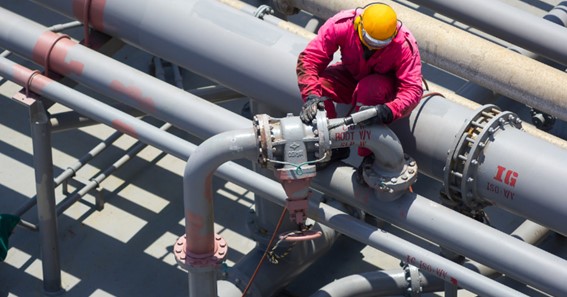Regarding sustainable industrial practices, it’s important to consider every aspect of the production process, including the gases used. One such group of gases that plays a vital role in various industries is inert gases. Inert gases, also known as noble gases, have unique properties that make them invaluable in various applications. Inert or noble gases refer to elements that include helium, neon, argon, krypton, xenon, and radon. These gases are characterised by low reactivity, which is ideal for many industrial applications. Among these gases, argon gas, in particular, has gained significant popularity due to its versatile properties and abundance.
This blog post will explore the significance of inert gases and how they contribute to sustainable industrial practices.
Enhancing Energy Efficiency: One of the key advantages of using inert gases in industrial processes is their ability to enhance energy efficiency. In metal fabrication and welding applications, argon gas is often used as a shielding gas to protect the weld area from atmospheric contamination. This not only ensures the quality of the weld but also reduces the need for excess energy consumption. By creating a controlled environment, inert gases like argon minimise the oxidation of metals and promote efficient heat transfer.
Preserving Product Quality: Inert gases play a crucial role in preserving the quality and longevity of various products. For example, in the food and beverage industry, modified atmosphere packaging (MAP) utilises inert gases to extend the shelf life of perishable goods. By replacing the oxygen in the packaging with gases like argon, the growth of spoilage-causing microorganisms is slowed down, thereby preserving the freshness and quality of the products. This reduces food waste and contributes to a more sustainable supply chain.
Environmental Protection: Inert gases offer a sustainable solution for protecting the environment. In industries where hazardous materials are handled, such as semiconductor manufacturing or pharmaceutical production, inert gases are utilised for their non-reactive properties. By displacing oxygen or other reactive gases, inert gases ensure a safer working environment and minimise the risk of accidents or chemical reactions. Additionally, these gases can be used in leak testing systems to detect and prevent the release of harmful substances into the atmosphere.
Precision and Accuracy: The use of inert gases is also critical in industries that require precision and accuracy. In laboratories and research facilities, these gases are utilised as carrier gases for gas chromatography and mass spectrometry. Their stability and low reactivity ensure accurate measurements and reliable results. Similarly, noble gases like argon fill fluorescent tubes and provide a consistent and long-lasting light source in lighting applications.
Click here – Cooking Made Easy: How a Saute Pan Can Simplify Your Meal Prep
Applications in Electronics and Semiconductor Industry
Inert gases like argon are crucial in the electronics and semiconductor industry for sustainable practices and technological advancements. Argon gas ensures clean and safe semiconductor manufacturing by creating a controlled environment that minimises defects and increases yield. In plasma processing, this gas is a stable and uniform medium, enabling precise material deposition and reducing waste. These inert gases also contribute to safely handling hazardous materials, preventing chemical reactions, and protecting workers. This gas helps maintain a contamination-free environment in cleanrooms, ensuring high-quality electronic devices while minimising rework and waste.
Conclusion
Inert gases like argon gas are indispensable in sustainable industrial practices. These gases offer numerous benefits across various industries, from enhancing energy efficiency to preserving product quality and protecting the environment. To build a sustainable future, people must value inert gases for waste reduction, enhanced efficiency, and safer workplaces. Incorporating inert gases into industrial processes can pave the way for a greener and more sustainable world.
